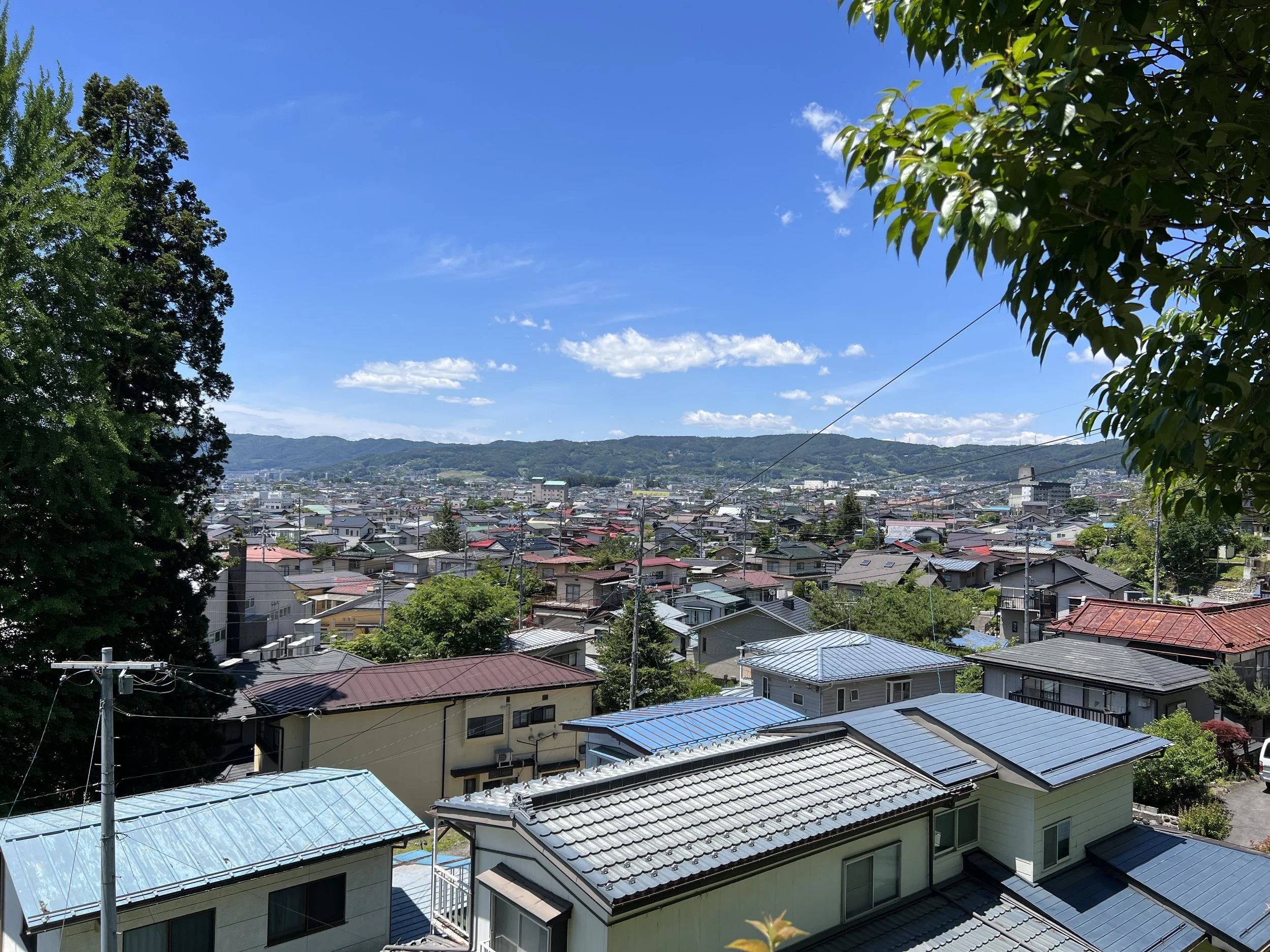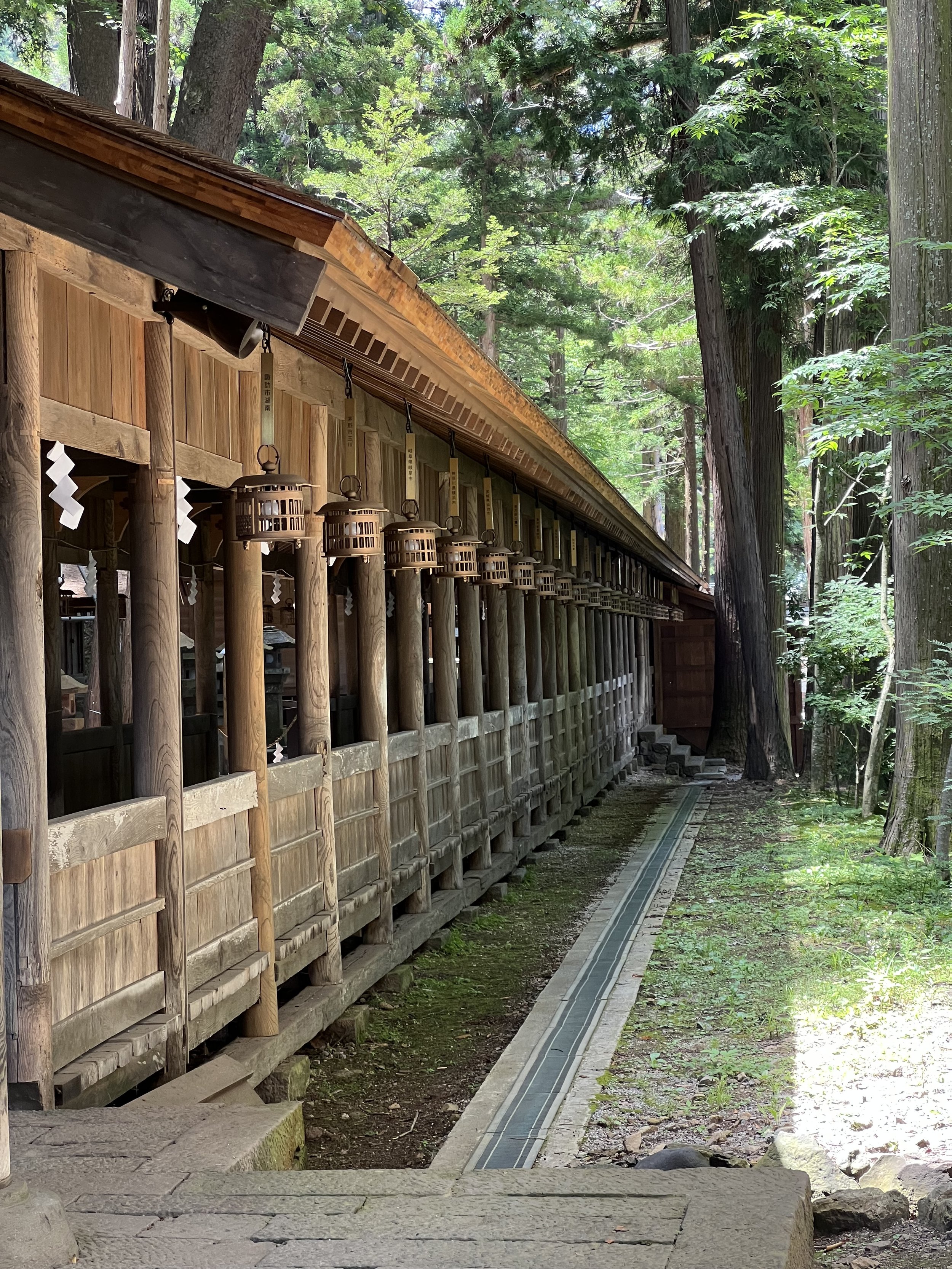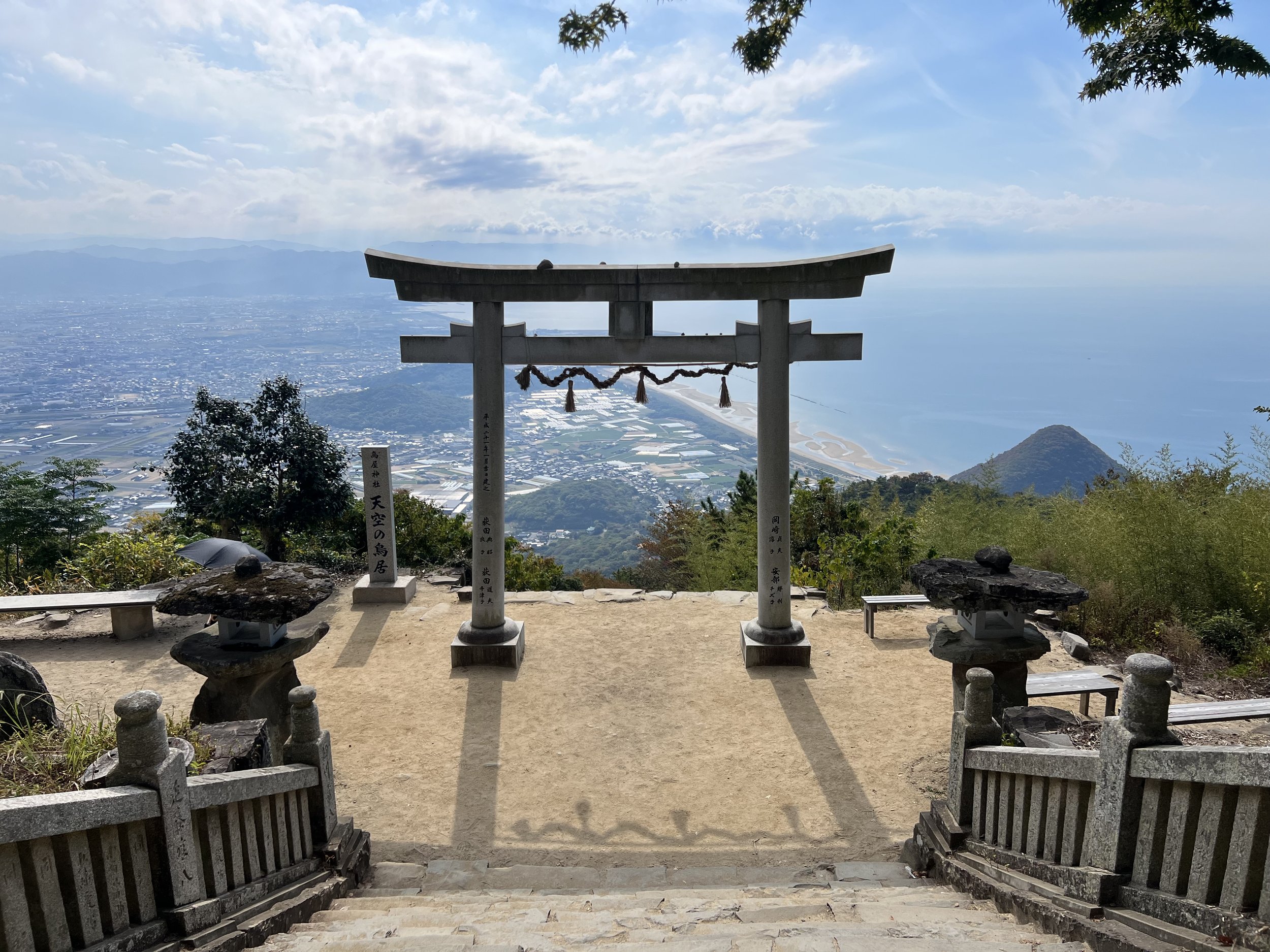Discover Suwa Taisha: Walking Itineraries for Shrine Lovers and Goshuin Collectors
Suwa Taisha (諏訪大社) isn’t just one shrine: it’s a sacred complex made up of four separate shrines scattered across the Suwa region in Nagano Prefecture. During my stay in Suwa, I had one of the most memorable and rewarding experiences of my trip: walking between the shrines and collecting all four goshuin at one of Japan’s oldest and most revered Shinto shrine complexes.
In this guide, I’ll share the walking routes I took to explore the four shrines at a relaxed pace, strolling through forested paths and peaceful neighborhoods. You’ll also find travel tips and nearby recommendations to help you discover this lesser-known corner of Japan: perfect for shrine lovers and travelers looking for off-the-beaten-path experiences in Japan.
Note: the shrines can be visited in any order. You can therefore reorganise my walking itineraries as you see fit, depending on where you are staying and your transport options.
An Introduction to Suwa Taisha, One of Japan’s Oldest Shrine Complexes
Suwa Taisha (諏訪大社) is one of the oldest and most revered Shinto shrines in Japan, serving as the head shrine of over 10,000 Suwa shrines across the country. Nobody knows exactly how old it is, but it was first mentioned in Japanese literature in the 7th century. What makes Suwa Taisha unique is its structure: instead of a single grand shrine, it consists of four distinct shrines located around Lake Suwa in Nagano Prefecture. These are the Upper Shrines, Kamisha Maemiya (上社 前宮) and Kamisha Honmiya (上社 本宮) in Chino city, and the Lower Shrines, Shimosha Harumiya (下社 春宮) and Shimosha Akimiya (下社 秋宮) in Shimo-Suwa.
With origins rooted in Japanese mythology, Suwa Taisha enshrines Takeminakata-no-Kami, also known as Suwa Myōjin, a deity associated with wind, water, hunting, and warfare. An interesting fact is that at the Kamisha shrines, the sacred object of worship is Mount Moriya itself, while the Shimosha shrines worship large trees. One of the shrine's most fascinating traditions is the Onbashira festival, held every seven years, during which huge wooden pillars are felled in the mountains and ceremonially raised at each shrine.
Goshuin Pilgrimage at Suwa Taisha: Visiting the Four Shrines Around Lake Suwa
One of the most meaningful ways to explore Suwa Taisha is by visiting all four shrines and collecting a goshuin (shrine seal) from each. Every site offers its unique goshuin, and you can purchase a goshuincho (stamp book) at the first shrine you visit if you don’t already have one.
While it’s possible to visit all four shrines in one day by car, taking the time to walk between them allows you to experience the quiet beauty of Suwa’s countryside. And if you complete the full collection of four goshuin, you’ll receive a small memento to commemorate your pilgrimage.
Goshuincho I bought at Kamisha Honmiya
Two of the four goshuin of Suwa Taisha shrines
➡️ You can learn more about goshuin in my article: “A Guide to Goshuin: the Perfect Souvenir for Temple and Shrine Lovers in Japan”.
Walking Itinerary #1: Discover the Lower Shrines of Suwa Taisha in Shimo-Suwa
Let’s begin this pilgrimage with the Lower Shrines in Shimo-Suwa: Shimosha Akimiya and Shimosha Harumiya. These shrines are easily reached on foot from Shimo-Suwa station, are connected by the old Nakasendo road, and can be visited in any order. This walking route takes about 1.5 to 2 hours depending on your pace and how many stops you make.
I arrived at Shimo-Suwa Station on a clear day, and to my surprise, caught a glimpse of Mt. Fuji from the platform, a beautiful start for this walk! From the station, I began my walk toward Shimosha Akimiya, passing through residential streets dotted with references to Suwa’s famous Onbashira Festival. It’s interesting to see how the festival shapes the town’s identity as you walk around Shimosuwa, with paintings and decorations related to the festival here and there.
After passing through the large metal torii gate marking the entrance to Shimosha Akimiya, I explored the shrine and admired the pair of large bronze komainu (guardian dogs), said to be the largest in Japan, and the huge sacred rope called shime-nawa adorning the Kagura hall. I took the time to walk around the shrine to appreciate its serene atmosphere, admire the wooden pillars that stand at each corner of the shrine, and stop to collect my first goshuin.
Leaving Akimiya, I continued on foot toward Shimosha Harumiya. Rather than taking all the way the Old Nakasendo route, I recommend following Route 142 slightly uphill—you’ll be rewarded with wider views over the town of Shimosuwa. Along the way, you’ll pass several historical sites. I didn’t have time to stop, but places like the Honjin Iwanami House (下諏訪宿本陣岩波家), a preserved Edo-era inn with a beautiful garden, and the local public bath Shimosuwa Onsen Tanga no Yu (下諏訪温泉 旦過の湯) looked intriguing.
One place I did stop at, and highly recommend, is Jiunji Temple (慈雲寺). The entrance is striking, with a moss-covered stone path leading to an elegant temple surrounded by forest. It was completely quiet when I visited, and felt like stepping into another world. Don’t miss the little pond behind the temple.
Shortly afterwards, I arrived at Shimosha Harumiya. Nestled in a wooded area, it felt more intimate than Akimiya. It quickly became my favourite of the four shrines. The sacred Japanese cedar, Musubi no Sugi (結びの杉), which dominates the right-hand side of the shrine is particularly impressive, splitting in two about 10 metres from the ground.
After exploring the grounds and collecting another goshuin, I took a short 5-minute walk and crossed the beautifully red Ukishima Bridge (浮島橋) to the nearby Manji-no-Sekibutsu (万治の石仏), a unique stone Buddha that’s said to grant wishes if you circle it three times in a clockwise manner while repeating your wish to yourself. Set in a small riverside park, the only sounds were the flowing water and birdsong and I enjoyed a relaxing break in this peaceful spot.
Manji-no-Sekibutsu
I returned to Shimo-Suwa Station via Daimon-dori, a street with a few local shops and eateries, and a few more historical sites such as Gebabashi Bridge (馬橋), which means “dismounting bridge" because all visiting warriors and aristocrats had to dismount from their horses here before proceeding to the shrine. You’ll also pass under another large metal torii gate.
Walking Itinerary #2: Visit the Upper Shrines of Suwa Taisha in Chino City
To visit Kamisha Maemiya and Kamisha Honmiya, head to Chino City. The two shrines are walkable between each other, but are further from Kami-Suwa or Chino Station, so it requires a bit more planning in terms of transport.
In my case, I took a local bus from Kamisuwa onsen and then walked for about 15 minutes to Kamisha Maemiya. From Chino station, you can take a taxi (around 10 minutes), walk (about 35 minutes), or rent a bike (roughly 15 minutes).
Kamisha Maemiya is considered the oldest of the Suwa Taisha shrines. Unlike the other shrines, its layout is more unusual: it’s hard to tell where the shrine begins and ends, as the buildings are spaced out and seem to blend into the forested surroundings. Of the four shrines, Maemiya felt the most tranquil.
From Kamisha Maemiya, it’s about a 30-minute walk to Kamisha Honmiya. You’ll pass through rural neighborhoods where you’ll encounter small shrines and temples, and can take a short detour to visit whimsical teahouses designed by Chino-born architect Fujimori Terunobu. Look out for the Flying Mud Boat (空飛ぶ泥舟), Takasugi-an (高過庵), and Hikusugi-an (低過庵). You can’t go inside, but they’re fun to look at from the outside. Takasugi-an was even featured by TIME magazine as one of the world’s most dangerous buildings!
Flying Mud Boat
Takasugi-an
Along the way, you’ll pass the Shinchokan Moriya Historical Museum (神長官 守矢史料館), also designed by Fujimori. It displays historical documents from the Kamakura period and tells the story of the Moriya family, who served as priests at the Upper Shrines for centuries.
Another hidden gem is Hokuto Shrine (北斗神社), perched atop a steep staircase overlooking Chino City and the surrounding region. The view is stunning, though the climb is steep and might not suit those with a fear of heights. On my descent, I met a friendly local taxi driver who was surprised to see a foreigner visiting this little shrine. He shared local anecdotes as we walked together to Kamisha Honmiya—one of those short but memorable travel encounters.
Kamisha Honmiya, the last of the four shrines on my pilgrimage, is located on the mountain foothill and had the largest number of buildings among the Suwa Taisha shrines. I found the Nunohashi bridge (布橋) and Gakudō (額堂) especially beautiful.
The approach to the shrine is also lined with souvenir shops and restaurants, making it a great place to take a break and enjoy some local specialties.
I wrapped up my visit with a soft ice cream and then caught a bus back to Kami-Suwa station. If you have time, you can also stop by the nearby Suwa City Museum (諏訪市博物館), which features exhibitions on local culture and history, and even has a foot bath near the entrance.
Other Things to Do and See Around Suwa Lake
Suwa is packed with things to see and do. After your shrine visits, you can take a walk around Lake Suwa or relax in one of the lakeside foot baths, visit Takashima Castle or hop on a sightseeing boat. I enjoyed Suwa so much that I wrote two other blog articles to cover this wonderful yet underexplored area of Nagano prefecture:
Where to Stay In Suwa
I highly recommend staying at Hama-no-yu (浜の湯), a large ryokan with hot springs in Kami-Suwa I enjoyed so much I came back for a second stay. It has a welcoming atmosphere, spacious rooms with lake views, multiple onsen baths (including open-air), and the option of a full kaiseki dinner.
➡️ You can check more options and availability of accommodation in the area on Agoda, Booking or Trip.
To Conclude
Suwa Taisha offers more than just a shrine visit: it's an immersion in Japan's ancient spiritual roots, best experienced slowly, on foot, and taking time to wander to soak in Suwa's rural charm and explore some of its other hidden gems. I loved the unique atmosphere of each of the four Suwa Taisha shrines, and I have my goshuin collection and the little commemorative souvenir (I won't say what it is to leave a bit of mystery if you decide to complete the collection too) to remind me of this wonderful experience. If you're planning a longer stay in the area, you can check out my other articles on Suwa, including a walking guide to Tateishi Park or a full Suwa travel guide.
Interested in discovering more atmospheric shrines and temples in Japan? You can read more of my shrines and temples related articles.
Found this article helpful? Buy me a coffee. 😊
Want to stay in touch? Subscribe to my monthly newsletter (with latest articles, updates, travel tips and more...) delivered straight to your inbox. 📩
Some of the links in this article are affiliate links. At no extra cost to you, I may earn a small commission when you click on them and make a purchase. And if you do, thanks for your support! Purchasing through these links is a great way to support Travely Notes, as this helps with the costs of running my blog.



































